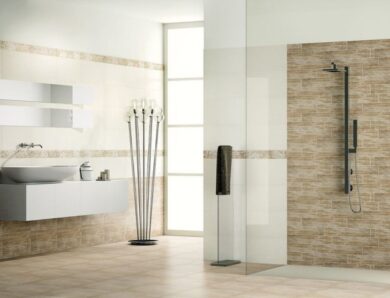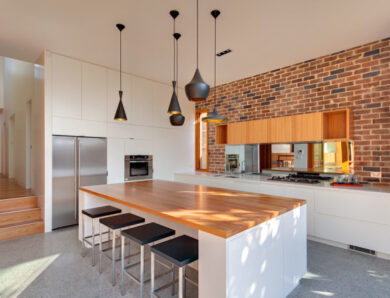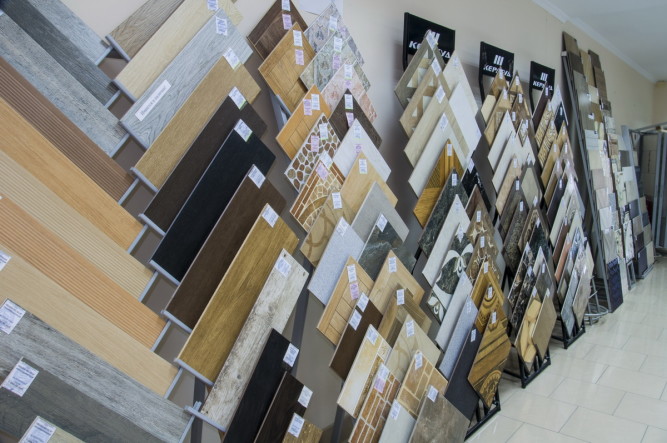Drawings for a mosaic from a tile: patterns and schemes with their own hands
Today mosaic is popular as a finishing material, with which drawings and patterns are created. To make a similar decor with their own hands and use ready-made samples, and homemade, example, from a tile. They also develop a sketch of the future composition themselves. Below we will get acquainted with the rules of such work and design options for this material.
Mosaic allows you to create a picture of any complexity
Specifics
Mosaic finishes are common in modern homes. The material competes with the more common coating - ceramic tile. Differs in appearance and decorative value. The peculiarity is that, that it is represented by a large number of miniature details, from which various drawings are created.
Purchasing mosaic is made of three types of materials:
- Ceramics. This is a standard option. It can be matte or rough or covered with glaze. From it whole pictures on any surfaces are easily created.
- Glass. Fragile-looking material, looks incredibly spectacular. Translucent details can visually facilitate the design. In order not to spoil the surface, in laying use white glue and transparent grout.
- Stone. The products are very strong and expensive. Note the great weight of this coating. Basically, the surface of the elements remains rough, creating a sense of brutality.
Types of mosaic tiles depending on the material
In order to facilitate the work of laying out small details, some manufacturers offer ready-made schemes of paintings or patterns for a set of mosaic tiles. However, sketches are created independently. And for even greater savings, think about how to make such a decor from improvised means.
homemade mosaic
Creating a unique image sketch for surface cladding is part of the job. Finished decor costs a lot of money, and therefore invented alternative options for its preparation on their own. Here are some ways:
- from a tile;
- from the dishes;
- from colored glass containers;
- of gypsum.
Varieties of finishing from improvised materials
The easiest and most affordable way is this, apparently, making a mosaic of tiles. Of course, in this case, you have to invent the appropriate pattern, but this is not a problem.
The work uses old dismantled material, unused tile from past repairs, and also buy cheap finishing. This includes remnants of tiles or poor condition. It is enough to clean the back surface of the tile from the old glue and break it into small pieces. For the same principle, decor is made from old or damaged utensils and glass bottles.
If the sketch of the future composition developed by you cannot be realized by means of a chaotic set of fragments, then start making plaster mosaic. This will require a silicone or polyurethane mold with cells of appropriate size. The working mass is prepared with the use of plasticizers. Also add a little white Portland cement for greater strength. In order to give color to the liquid solution, a pigment is introduced or the inner surface of the mold is painted with it. Paint the finished mosaic.
calculation options
As for the plan, schemes are made independently or use the corresponding in a ready kind. Of course, to facilitate the process of selecting fragments, it is better to process patterns from the mosaic available on hands.
This surface decor is available in different variations. Highlight the following sketches:
- Chaotic calculation. With this implementation, the scheme is not required, as small details are pasted in any order, mixing colors and shapes. It turns out a speckled or solid surface.
- Repeating motif. The picture is easy to make with your own hands. The essence of the calculation is to create a simple pattern, having repeating elements along the entire length of the work area. Example, waves, geometry, stripes.
- Graphic drawing. The simplest version of the picture, when using multiple tile colors, often achromatic gamma.
- Concentric pattern. The decor has a midpoint, from which the same lines diverge in a circle, creating a symmetrical composition with repeating elements in a circle.
- Painting. The most difficult sketch, which, when performed with your own hands, requires at least minimal artistic skills, patience and endurance. The composition is created by the pixel principle, gradually, therefore it is necessary to have a ready sketch at hand.
- Local inserts. This is a light option, when the picture is created by a single calculation of simple elements on a solid background.
Examples of mosaic tiles
Rules of performance of works
To put the idea into practice, you need to know the basic principles. Applying mosaic decor with your own hands is done in a certain sequence. In order to prevent delays and mistakes in the process of major work, think about the exact layout of the material.
Marking of a musical pattern is carried out in several variations. First, draw a sketch on paper. This will allow you to carefully consider the decor and layout of each individual fragment. It is important to adhere to the exact scale. If you have the skills to work with special computer programs, transfer the image to digital form and see how it will look in the interior.
Next, prepare the surface for tiling. It is important to lay the mosaic tiles on a perfectly flat surface. Marking is applied to the dried plaster and primer, which reflects the state of each matrix and individual chips.
If you work with a horizontal surface, it is possible to lay out the decor on dry and adjust the position of the fragments.
Only after marking the contours of the drawing begin processing. In order not to get lost, apply a small amount of glue on the surface. Otherwise, you will not see markup for each subsequent segment of the area. This will shift the decor and then have to redo some of the work, performed earlier. For convenience, it is better to move from the center to the edges. So, you will be able to maintain symmetry and correct inaccuracies in the masonry. Work, performed according to the true scheme, will please you with excellent results and a beautiful pattern on the veneered surface.



